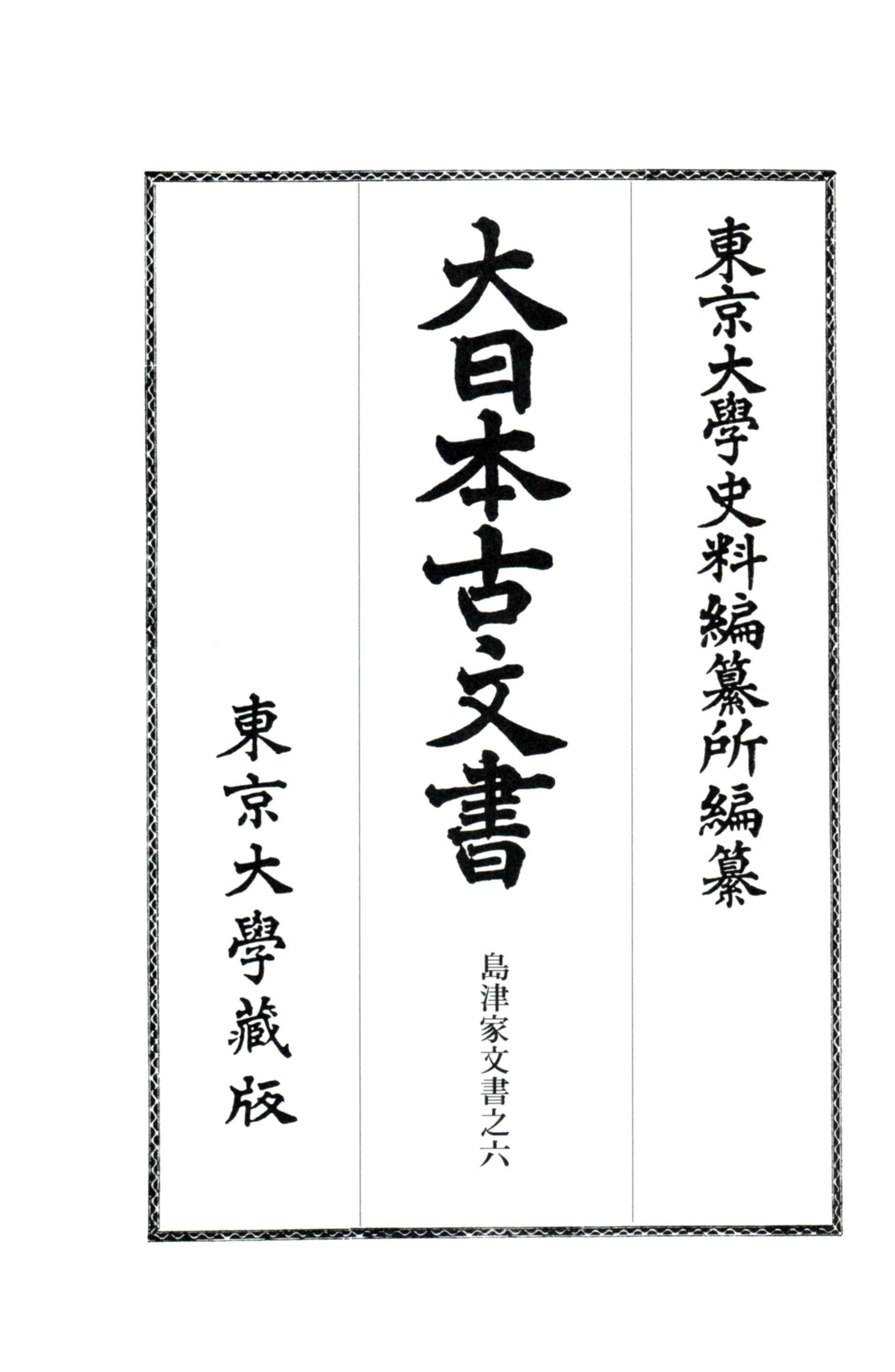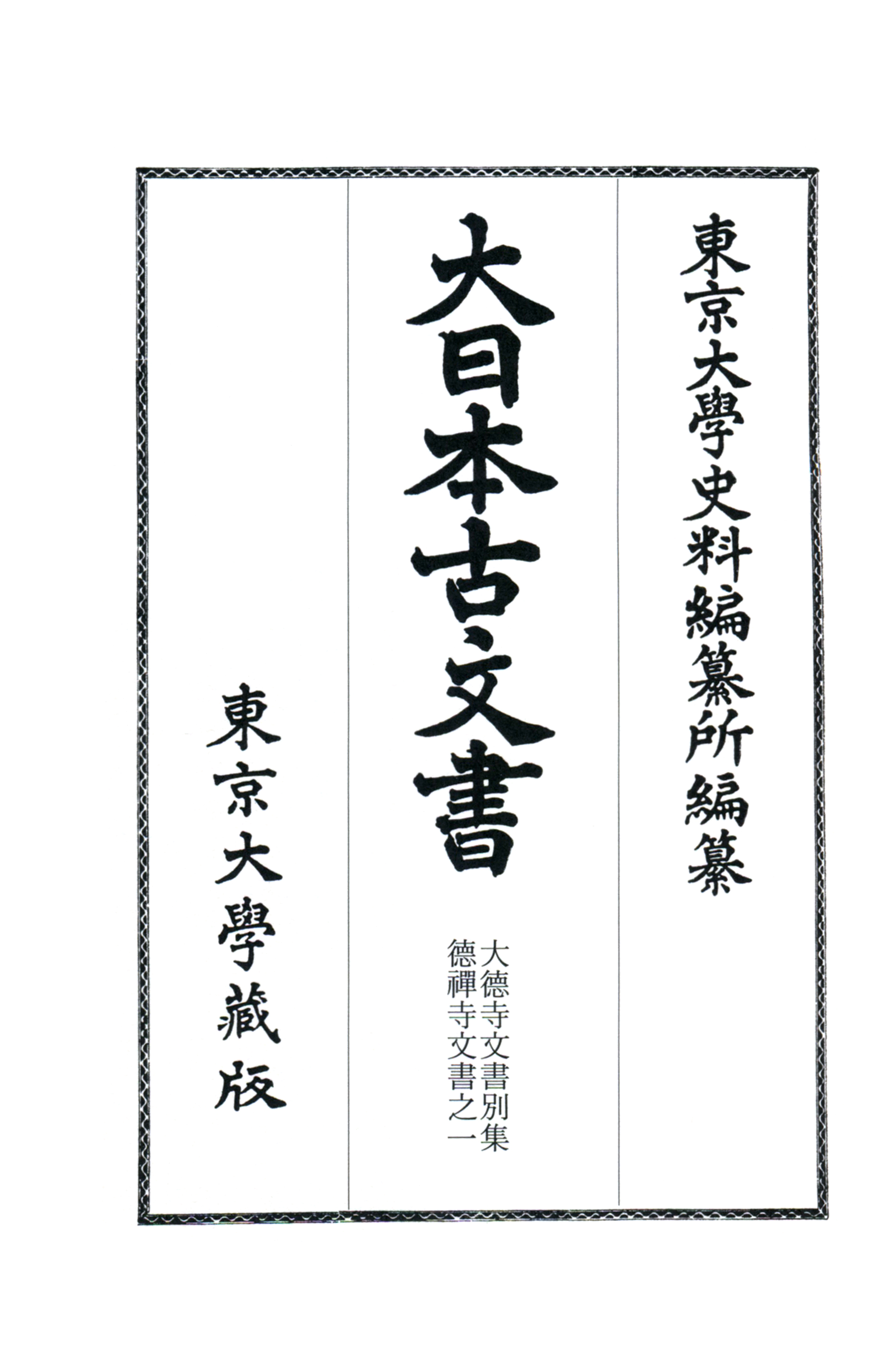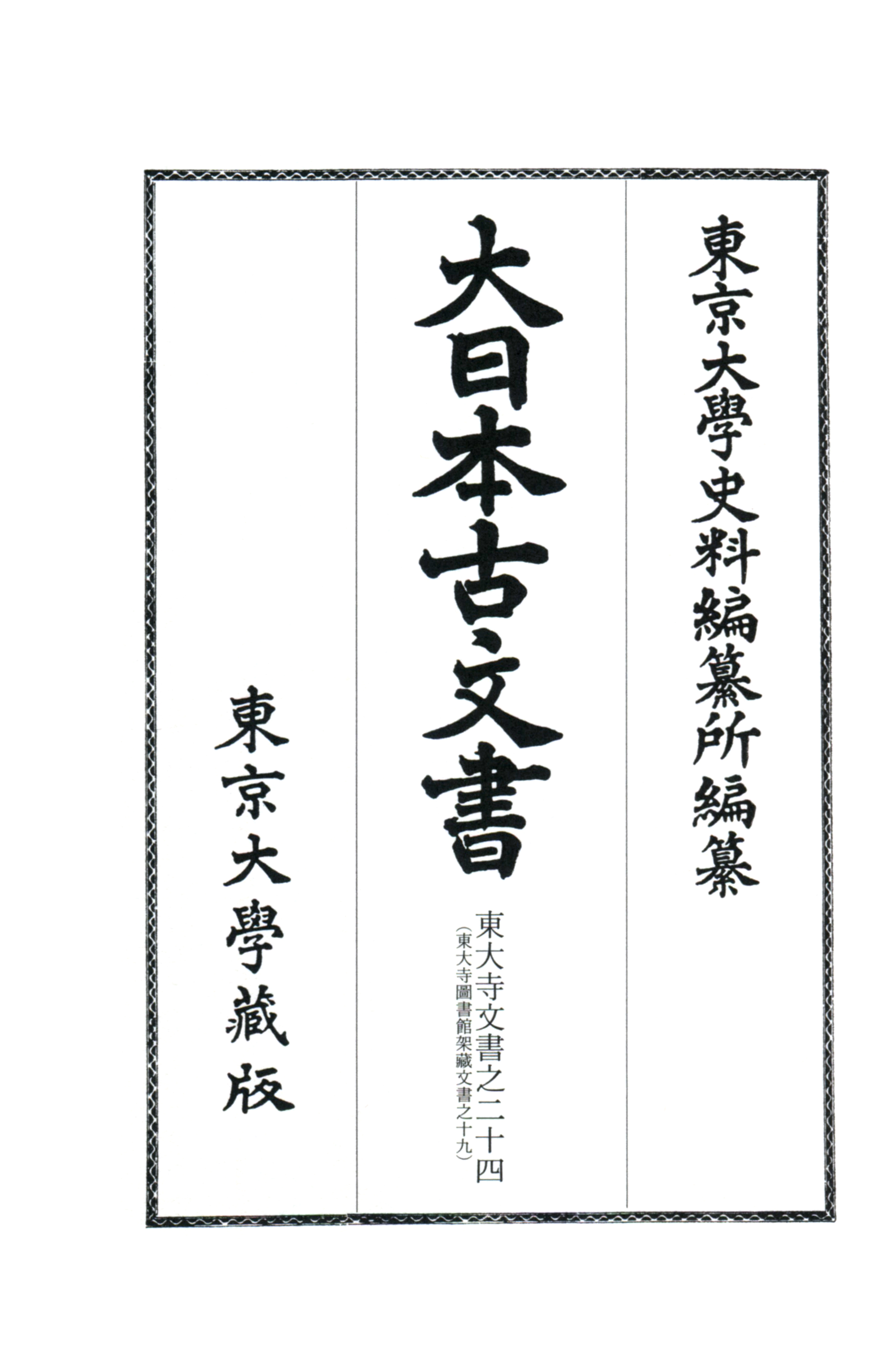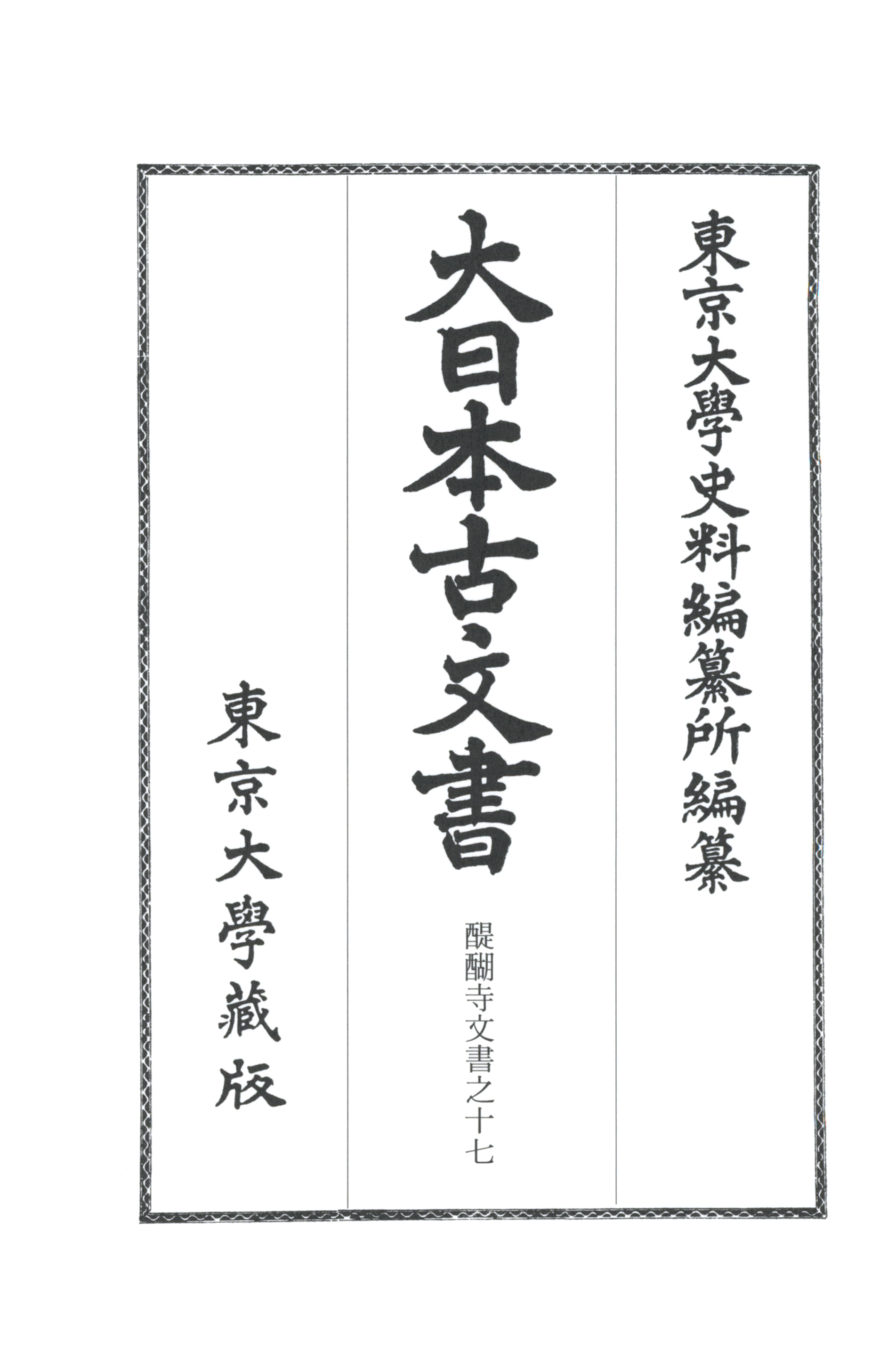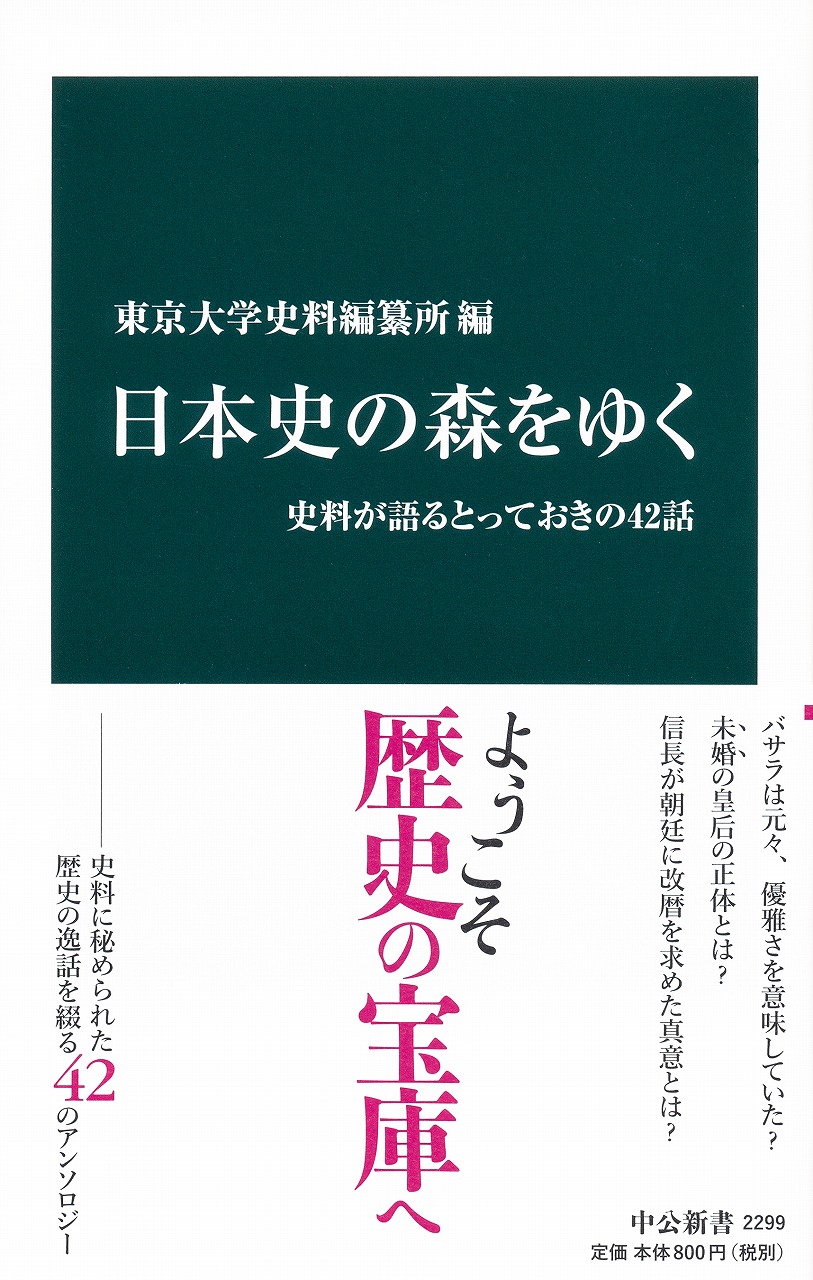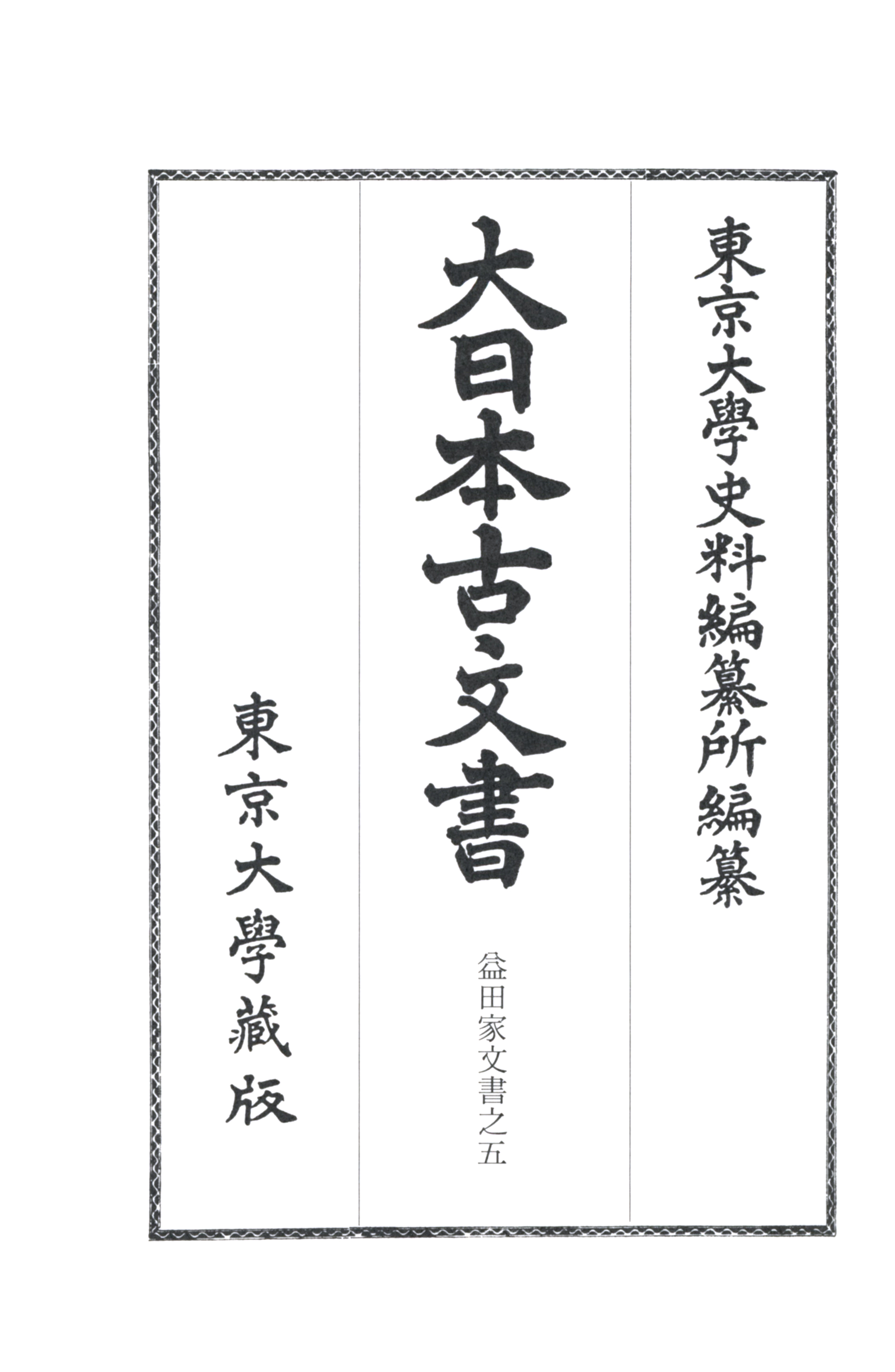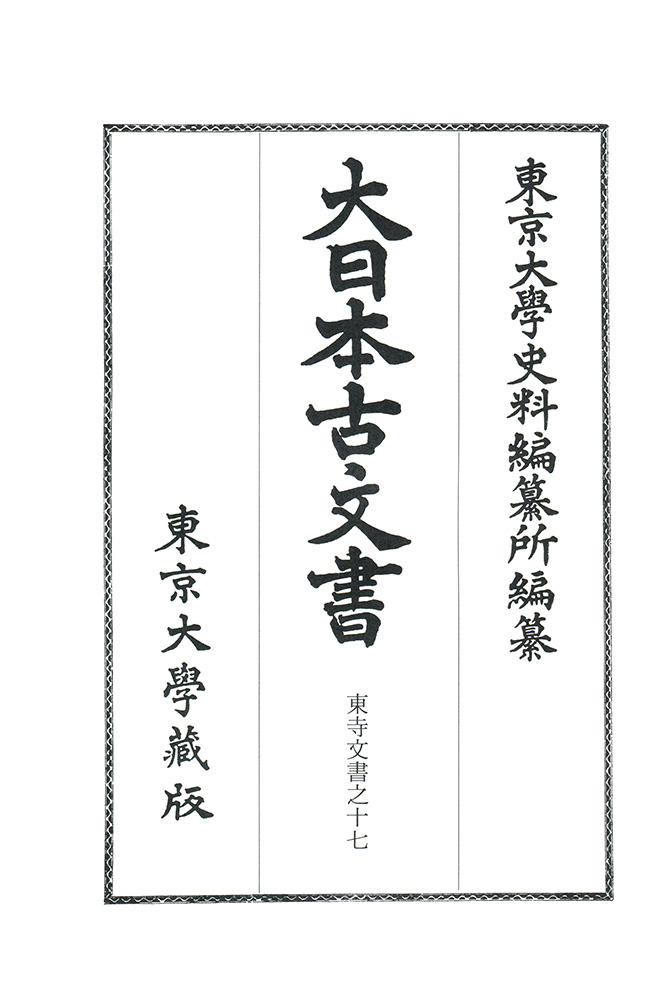
Title
Dai-Nihon Komonjo, Iewake dai 10, Toji Monjo no 17: Hyakugo Monjo Re no 3/So no 1 (Old Documents of Japan, Classified by Institution/Family #10: Archive of To-ji Temple #17 – Archives Contained in One Hundred Boxes: box “れ”#3 and “そ”#1)
Size
328 pages, A5 format
Language
Japanese
Released
March 31, 2016
ISBN
978-4-13-091317-1
Published by
University of Tokyo Press
Book Info
See Book Availability at Library
Japanese Page
Since the publication of the first installment of Dai-Nihon Komonjo (Old Documents of Japan) in 1901, this Historiographical Institute series has served as a fundamental record collection for Japanese historical research. Currently, for the Dai-Nihon Komonjo Iewake Daiju Toji Monjo, there are ongoing efforts to revise and reprint approximately 25,000 documents entitled Toji Hyakugo Monjo (the Archives of To-ji Temple Contained in One Hundred Boxes), part of the extensive document collection originally preserved at To-ji temple in Kyoto, where there is an impressive five-storied pagoda.
The Archives of To-ji Temple were designated as a National Treasure in 1997 and included in the UNESCO Memory of the World Register in October 2015. Moreover, it is recognized worldwide as a rare example of a well-preserved historical record describing the unique Buddhist culture that developed in the eastern tip of Asia. In particular, it includes many documents from the shoen (estates) that financially supported the temples’ religious activities. These documents have been widely used as a fundamental historical record for legal and socioeconomic history since the start of the modern era in Japan. As research has progressed, it has become evident that this archive can contribute greatly to other subject fields as well.
The Archives of To-ji Temple span around 1,000 years, from the 8th to the beginning of the 18th centuries. While in use, the monks of To-ji carefully managed and stored these documents in boxes. During the Edo Period, the documents were then transferred to 100 new, identical paulownia wood boxes, donated by Maeda Tsunanori, the fifth lord of the Kaga Domain. These lidded boxes were labeled according to the i-ro-ha hiragana and katakana ordering system, were counted using the go unit—hence, the name hyaku-go—and were carefully stored in To-ji’s Treasure House. Kyoto Institute, Library and Archives, has created detailed images of hyakugo monjo writing, format, boxes, and so on that are available at the Hyakugo Archives WEB (http://hyakugo.kyoto.jp/).
This book contains reprints of documents from box “れ” and box “そ” of the extensive Archives of To-ji Temple. Although it is impossible to fully cover the content of individual documents, it includes much information related to the receipt and distribution of annual rent payments from the major To-ji shoen (including Kamikuze-no-sho, Shimokuze-no-sho, and Uematsu-no-sho in Yamashiro Province and Yano-no-sho in Harima Province) and conflicts over territorial rights with other feudal lords, as well as shoen and temple account books. By assembling and analyzing these, we can better understand shoen territories and temple management, the Muromachi Bakufu’s legal system, and so on. We can also explore the deeds of individuals in history; for example, in the last part of the box “れ” is a single undated letter handwritten by Sogo Kazumasa—in his teenage years—who provided military support to the Miyoshi Nagayoshi government during the Sengoku Period. A careful reading of this letter together with other related documents reveals his anger, anxiety, and other emotions when experiencing issues with To-ji. Exploring historical records related to a single document and then analyzing it in the context of the associated personal relationships and social circumstances is one method in the study of history.
The Dai-Nihon Komonjo series aims to build a reliable foundation for the study of history by producing critical editions: accurate reprints that take into account the newest developments in paleography.
(Written by TAKAHASHI Toshiko, Professor, Historiographical Institute / 2017)
Related Info
http://hyakugo.kyoto.jp/eng/



 Find a book
Find a book


